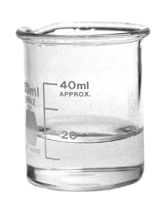1.11 understand how a chromatogram provides information about the composition of a mixture
PAPER CHROMATOGRAPHY - COMPOSITION OF A MIXTURE Diagram Showing the Composition of an Ink using Paper Chromatography COMPOSITION OF A MIXTURE: Chromatograms will Show the Composition of a Mixture as the Different Coloured Substances (Components) will Spread Apart as they will Have Different Solubilities so will Travel at Different Rates A Pure Substance will Only Produce One Spot on the Chromatogram during Paper Chromatography In the Diagram Above, Red, Blue and Yellow are Three Pure Substances, whilst the Sample on the Left is a Mixture of All Three - https://igcse-chemistry-2017.blogspot.ae/search?q=1.11




